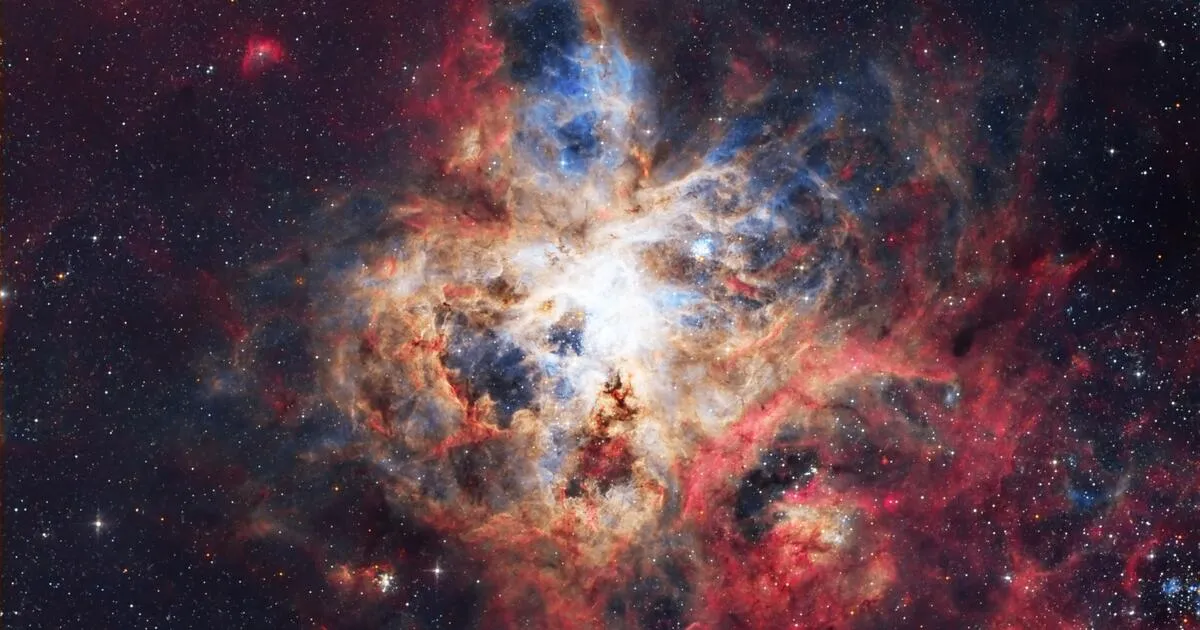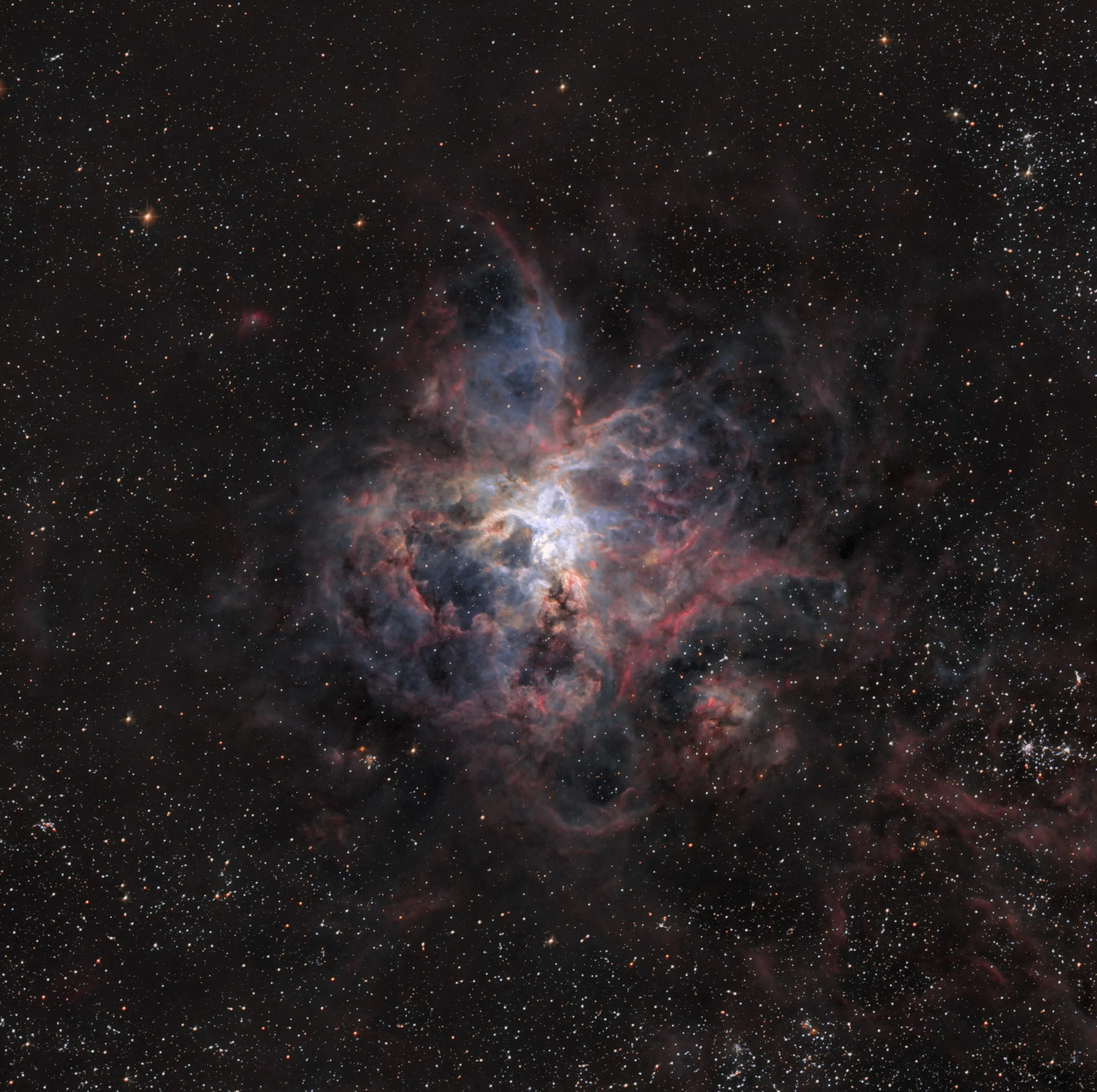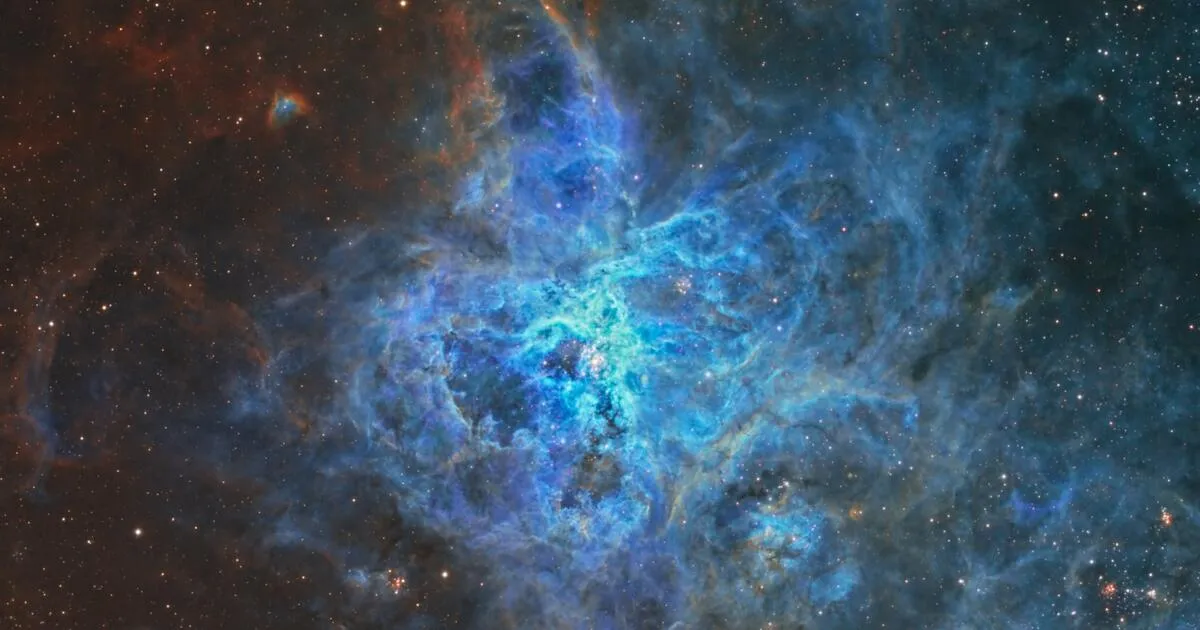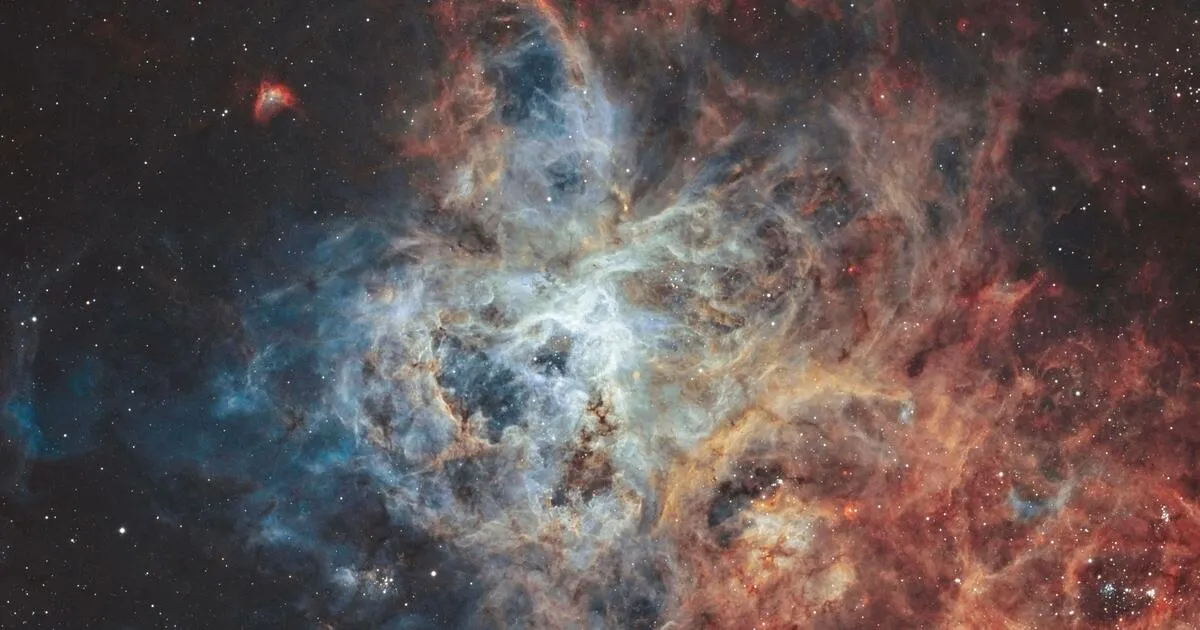What is the Tarantula Nebula
The Tarantula Nebula, also known as 30 Doradus, is a vast and stunning region of ionized hydrogen gas located in the Large Magellanic Cloud (LMC), a satellite galaxy of the Milky Way. This giant nebula is one of the most active star-forming regions in the Local Group of galaxies, making it a prime target for astronomical study. Its intricate structures, vibrant colors, and the presence of massive young stars make it a captivating subject for both professional astronomers and stargazers alike. The Tarantula Nebula’s luminosity and size are truly remarkable; it is so bright that, if it were as close to Earth as the Orion Nebula, it would cast shadows.
Location and Discovery of the Tarantula Nebula
Where is the Tarantula Nebula Located

The Tarantula Nebula resides within the Large Magellanic Cloud, approximately 160,000 light-years away from Earth. This places it well outside our own galaxy, offering astronomers a unique perspective on star formation processes in a different galactic environment. Its location in the LMC makes it accessible to both ground-based and space-based telescopes, allowing for detailed observations across the electromagnetic spectrum. The LMC’s relatively close proximity to the Milky Way and its favorable inclination make the Tarantula Nebula an ideal laboratory for studying the lifecycle of stars and the evolution of galaxies.
History of the Tarantula Nebula Discovery
The Tarantula Nebula’s discovery dates back to the early days of telescopic astronomy. It was first cataloged in 1751 by Nicolas-Louis de Lacaille, who described it as a ’nebulous patch.’ However, it wasn’t until later observations that its true nature as a stellar nursery began to emerge. Over the centuries, advancements in telescope technology have allowed astronomers to delve deeper into the nebula’s structure and dynamics, revealing the presence of thousands of young, massive stars and intricate filaments of gas and dust. The nebula’s intriguing spider-like appearance, with its glowing filaments radiating outwards, led to its evocative name, which has captivated observers for generations.
Key Facts about the Tarantula Nebula
The Size and Distance of the Tarantula Nebula

The Tarantula Nebula is an immense structure, spanning nearly 1,000 light-years across. This vast size makes it one of the largest and most active star-forming regions known in the Local Group of galaxies. Its distance of approximately 160,000 light-years allows astronomers to study a complex, dynamic environment at a considerable remove, which provides crucial insights into the processes of stellar evolution. The nebula’s scale and distance make it a challenging target, but the rewards are significant, as they offer a unique look at the conditions that give rise to the stars and other celestial bodies.
The Tarantula Nebula’s Star Formation
The Tarantula Nebula is a hotbed of star formation, with new stars constantly being born within its dusty clouds. At the heart of the nebula lies R136, a massive star cluster containing some of the most luminous and massive stars known. These stars emit intense radiation and powerful stellar winds, which shape the nebula’s structure and trigger the formation of new stars. The study of star formation within the Tarantula Nebula provides valuable insights into how stars of various sizes and types are born, and how they influence their surrounding environment. Astronomers use advanced instruments, such as the Hubble Space Telescope and the James Webb Space Telescope, to peer through the dust and observe the early stages of star formation.
Notable features of the Tarantula Nebula
Several remarkable features contribute to the Tarantula Nebula’s appeal. The central star cluster, R136, is home to numerous massive stars that dominate the nebula’s overall luminosity. The nebula’s intricate network of filaments, formed by the interplay of stellar winds, radiation pressure, and magnetic fields, creates a complex and dynamic environment. In addition, the presence of numerous stellar nurseries, including the ‘spider’ itself, highlights the nebula’s active star-forming regions. These features collectively make the Tarantula Nebula a prime target for astronomers seeking to understand the processes of star birth, evolution, and the impact of massive stars on their surroundings.
The Tarantula Nebula’s Impact on Astronomy

The Tarantula Nebula has had a profound impact on our understanding of astronomy. Its study has revealed crucial insights into star formation, the evolution of massive stars, and the dynamics of interstellar environments. It is also a valuable laboratory for testing models of galaxy evolution and understanding how different stellar populations arise. The nebula’s rich and dynamic environment serves as a benchmark for the study of stellar nurseries in other galaxies. The discoveries made within the Tarantula Nebula have advanced our knowledge of the cosmos and contributed significantly to our broader understanding of the universe.
Ongoing Research and Future Exploration
Research into the Tarantula Nebula is ongoing, with astronomers continuously analyzing data from ground-based and space-based telescopes. The James Webb Space Telescope, with its advanced infrared capabilities, is particularly poised to reveal new details about the nebula’s star formation processes. Future explorations will focus on mapping the nebula’s complex gas and dust structures, studying the evolution of individual stars within the nebula, and understanding the impact of massive stars on their surroundings. The data collected will allow for better models of star formation, galactic evolution, and the overall process of cosmic evolution.
Significance in Galactic Studies
The Tarantula Nebula holds significant importance in galactic studies. It is a key example of an environment where high-mass stars are born and where their intense energy impacts their environment and surrounding galactic material. These stars play a critical role in the chemical enrichment of galaxies, returning the elements they synthesized to the interstellar medium when they explode as supernovae. Observing the Tarantula Nebula, and studying the formation and evolution of stars within it, provides insights into how similar processes shape other galaxies. Understanding this helps astronomers better understand the evolution of the universe.
